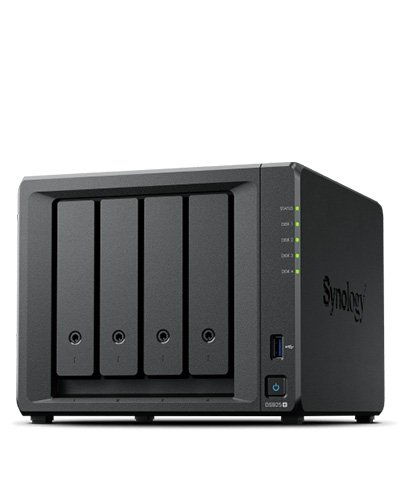
Synology DiskStation DS925+
Not the upgrade you desire
The DiskStation DS925+ offers several vital enhancements, including dual 2.5 Gigabit Ethernet ports and a powerful quad-core Ryzen processor. While this NAS provides an advantage over the DS923+ in terms of performance, the benefits are somewhat diminished by a restrictive hard drive policy. Notably, the DS925+ only supports Synology-branded HDDs, limiting user options significantly. This lack of compatibility with common brands like Seagate and WD renders the DS925+ less appealing, making it a challenging choice for many users.
Pros
- Dual 2.5 Gigabit Ethernet ports
- Robust hardware
- Excellent for running Plex
- Top-tier software
- USB-C expansion capabilities
- Dual M.2 slots for additional storage
Cons
- Severely limited HDD compatibility
- No option for future 10GbE networking
- No hardware transcoding support for Plex
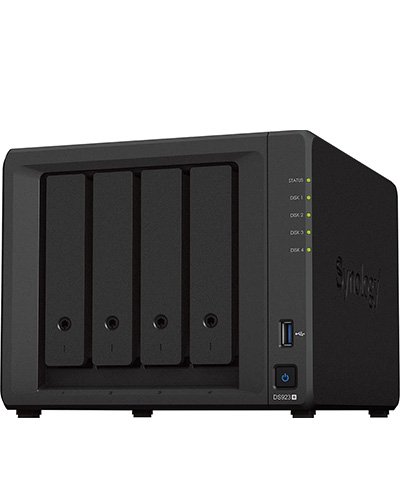
Synology DiskStation DS923+
A solid option
For those deciding between the two, I recommend selecting the DiskStation DS923+. Powered by a dual-core Ryzen processor, it performs reliably for everyday tasks, coupled with a top-notch software experience. Even though the DS923+ is a few years old, it has no significant limitations aside from its Gigabit Ethernet ports. If you need multi-Gigabit capabilities, upgrading with a 10GbE card is straightforward. The unrestricted HDD use further enhances the DS923+’s overall value compared to the DS925+, making it a more sensible choice while it remains in stock.
Pros
- Decent hardware
- No Plex issues
- No restrictions on HDDs
- M.2 slots available for storage
- Identical software to DS925+
Cons
- Gigabit Ethernet as standard
- No transcoding option
Synology DiskStation DS925+ vs. DiskStation DS923+: Design and Features

Synology has maintained a consistent design over the last decade, resulting in both the DiskStation DS925+ and the DiskStation DS923+ appearing nearly identical. Featuring a robust black chassis with side vents for passive cooling, each unit is equipped with dual 92mm cooling fans at the rear.
This design is unobtrusive, and the durable aluminum body ensures long-lasting use. My experience with the DS923+ has been entirely positive, and I expect similar reliability from the DS925+. The power button is positioned on the right side, accompanied by status LED indicators and a USB-A port.

The drive bays are user-friendly, allowing for easy access, and can be locked if desired. Installing 3.5-inch HDDs is a simple process that requires no tools. However, 2.5-inch SSDs need to be mounted in the drive bay for installation.
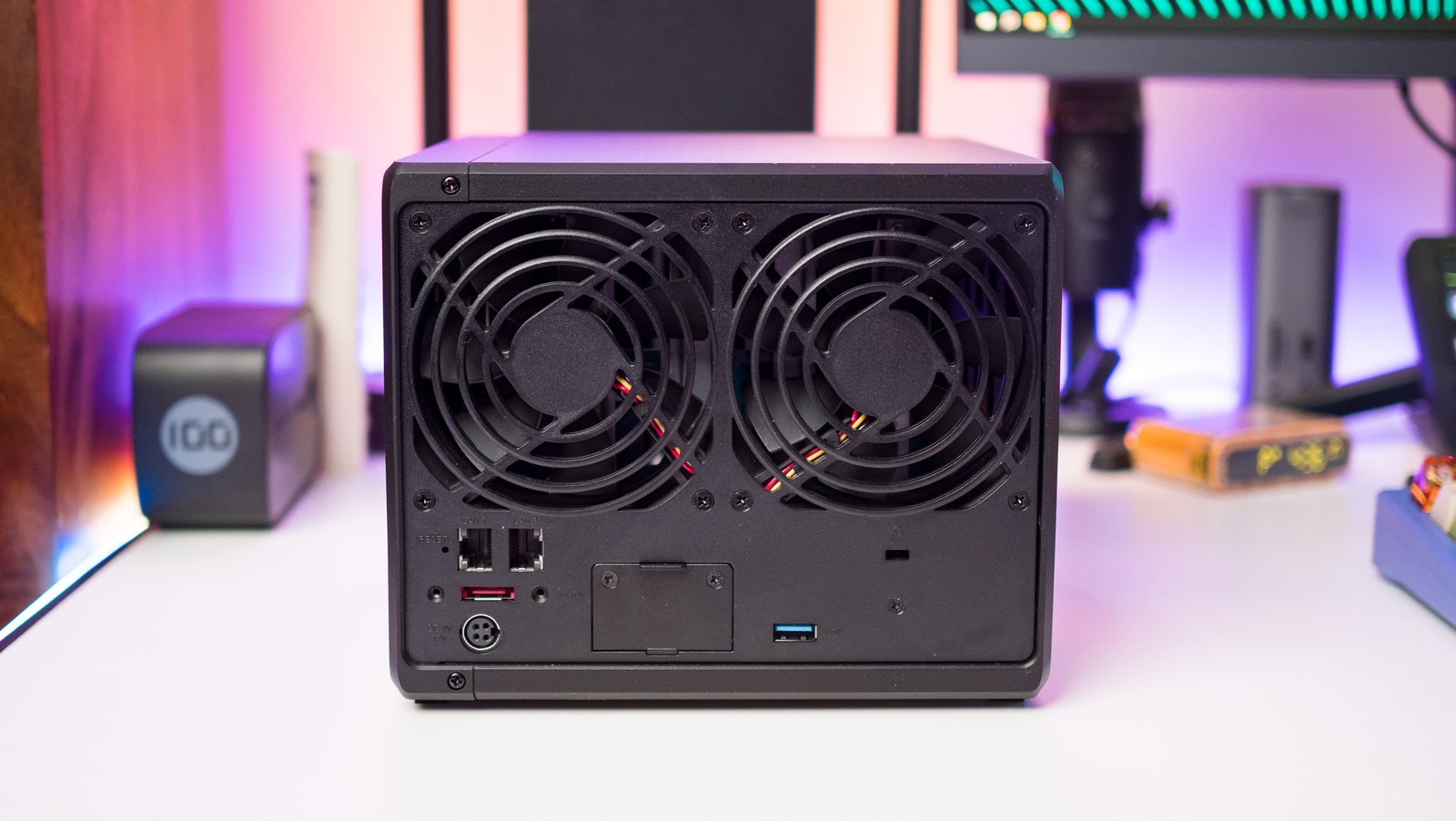
On the rear, there is a standard USB port and two M.2 slots located on the underside for adding SSDs. The DS925+ stands out with its dual 2.5 Gigabit Ethernet ports, offering a substantial upgrade over the DS923+, which is limited to Gigabit Ethernet. Furthermore, the DS925+ supports USB-C for drive expansion, whereas the DS923+ features an eSATA port.
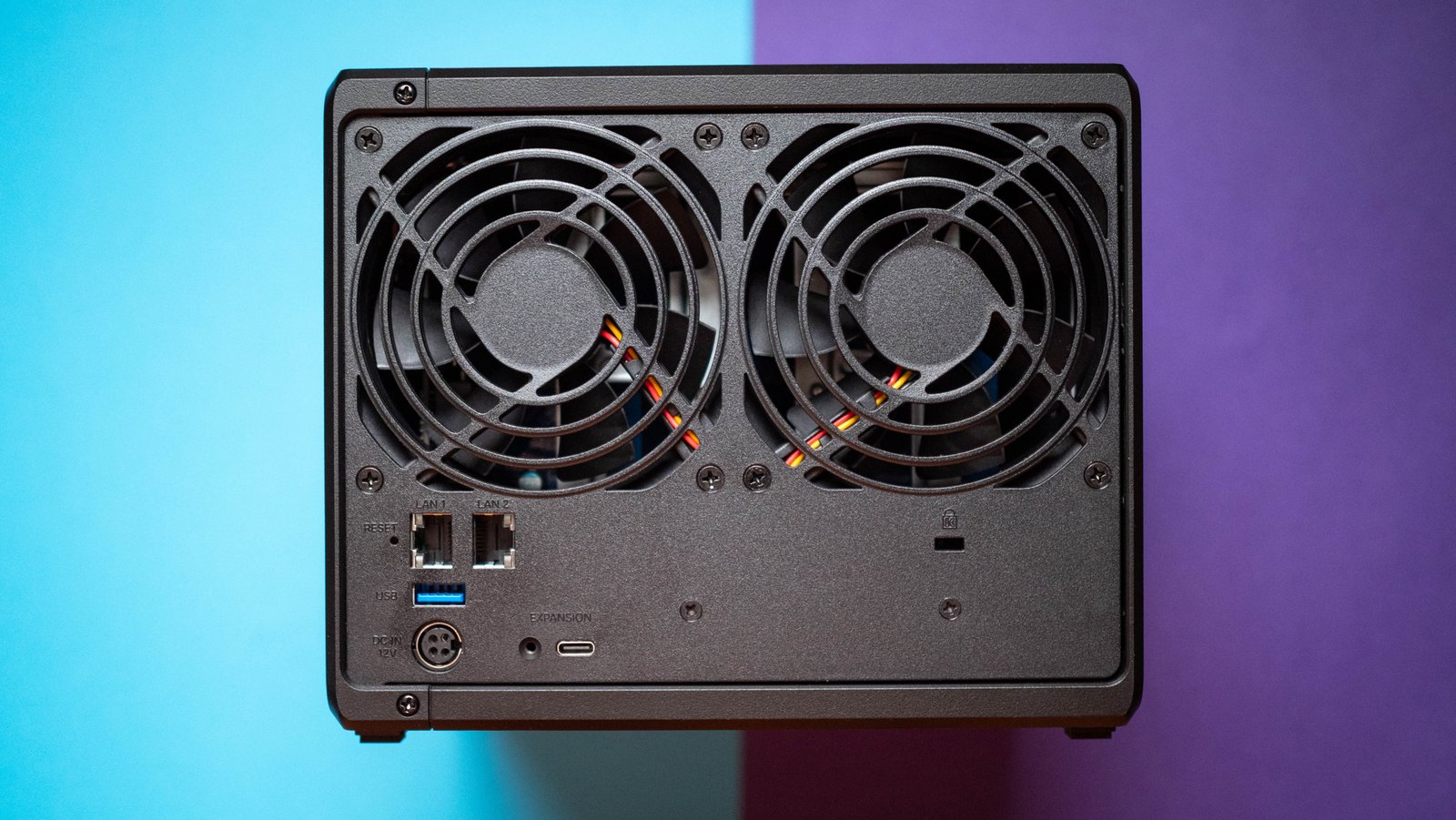
Although it’s excellent to see multi-Gigabit connectivity included by default, the DS925+ lacks an upgrade path to 10GbE networking, unlike the DS923+. The latter has an easy option to add a 10GbE card through a rear connector, providing greater adaptability.
Synology DiskStation DS925+ vs. DiskStation DS923+: Software and Real-world Experience
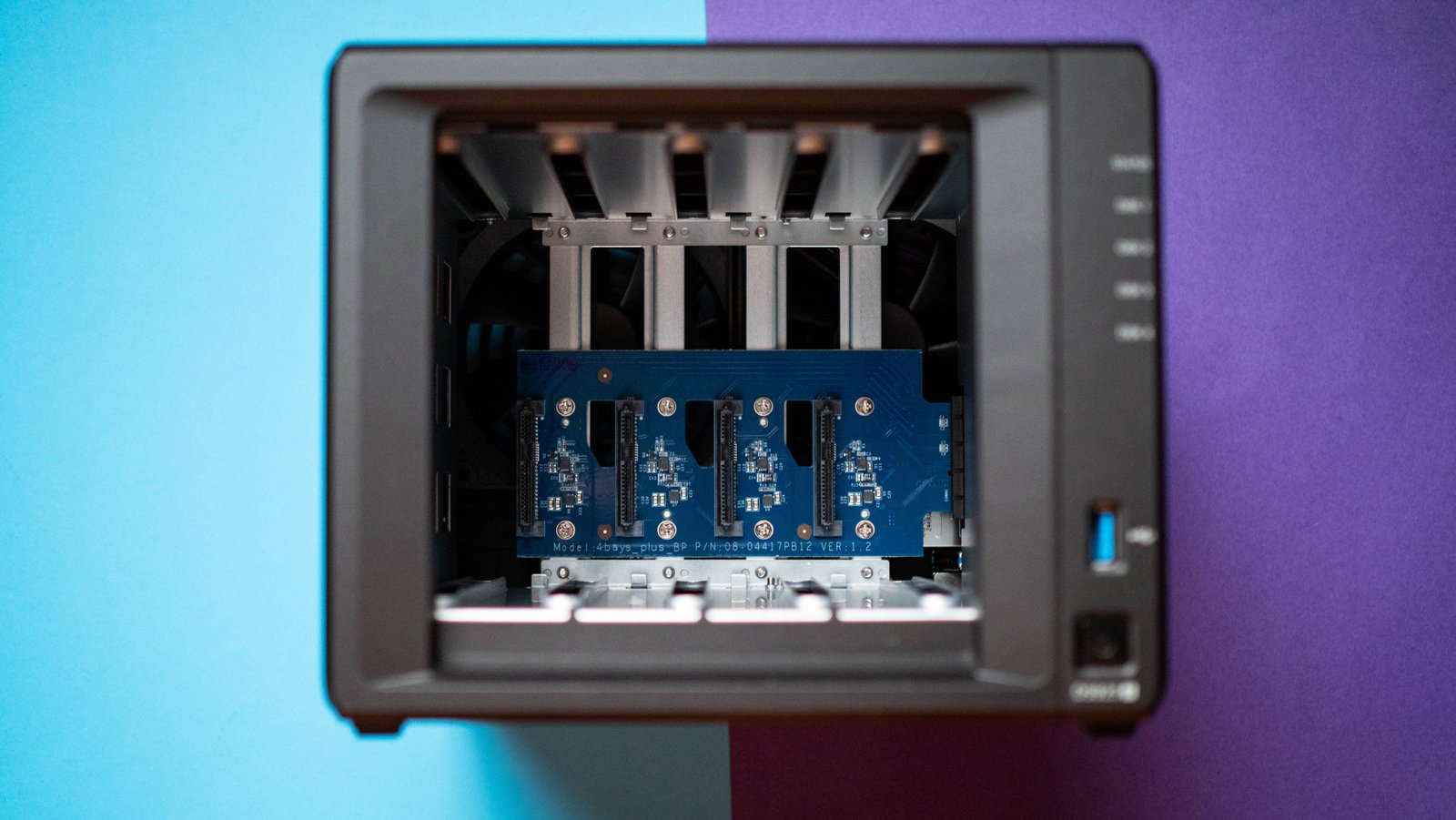
Both NAS units utilize identical software, thus offering no distinction between them in terms of functionality. However, the DiskStation DS925+ features a quad-core Ryzen V1500B which performs better under demanding conditions. This doesn’t imply that the DS923+ is underpowered; rather, the DS925+ simply has a bit more capacity to handle heavier workloads. Both devices come equipped with 4GB of RAM out of the box.
The main allure of acquiring a Synology NAS lies in its DiskStation Manager (DSM) software. Synology excels in providing a rich feature set and impressive mobile applications. Effortless photo uploads and data transfers from mobile devices enhance the usability of either NAS, while powerful tools offer a solid local alternative to cloud solutions.
Unfortunately, one major drawback of the DiskStation DS925+ is its restrictive hard drive policy. Users can easily integrate any Seagate IronWolf, WD Red, or similar hard drives into the DiskStation DS923+, but the DS925+ strictly requires Synology drives to operate, prohibiting even the installation of DSM software without them.
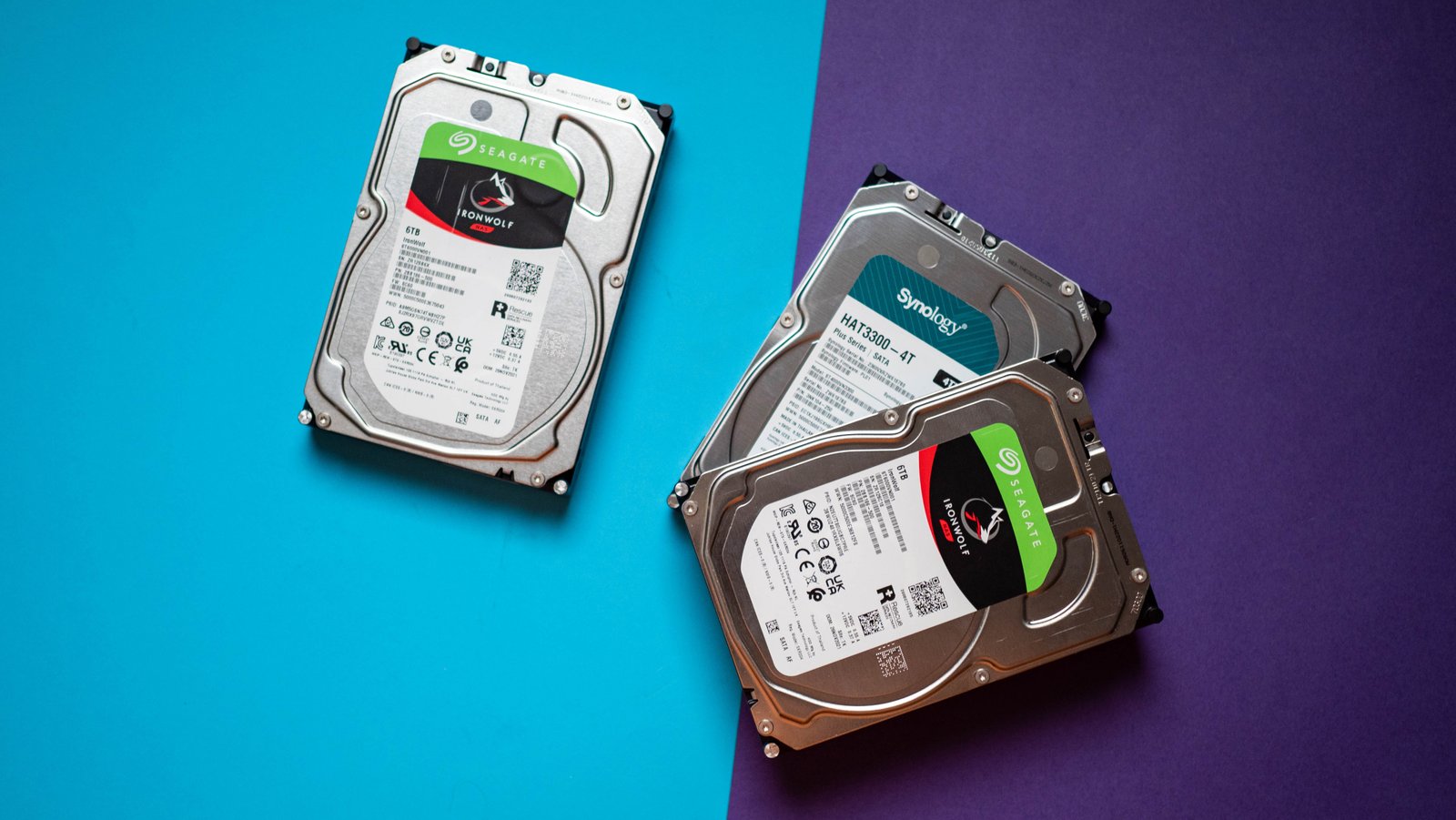
This limitation has significant consequences, as Synology’s HDDs are generally more expensive than comparable models from Seagate and Western Digital. The company claims this measure is in place for reliability purposes but has yet to present any concrete data to support the assertion that its drives outperform others.
Both models serve effectively as Plex NAS servers, offering seamless playback and easy setup for remote streaming. However, the AMD-based hardware lacks transcoding capabilities, a feature missing from both the DS925+ and DS923+. If transcoding is a necessity for you,
Synology DiskStation DS925+ vs. DiskStation DS923+: Making the Right Choice

Purchasing the DiskStation DS925+ may not be wise. While it boasts better hardware and multi-Gigabit capabilities, the HDD limitations significantly hinder its practicality. Nonetheless, the DS925+ remains a solid NAS option. If the hard drive restrictions don’t concern you, it’s worth considering.
However, with the DiskStation DS923+ still available, the older NAS is a more attractive choice moving into 2025. The standard Gigabit Ethernet ports may be outdated, yet upgrading to a 10GbE card is feasible for an additional $100, and you can use any Seagate, Toshiba, or WD drives without issues.
Given the circumstances surrounding the DS925+, I recommend opting for the DS923+ while it’s still on the market. It continues to serve as a dependable 4-bay Plex NAS in 2025 without unnecessary limitations.

Synology DiskStation DS923+
A solid option
If you need a powerful 4-bay NAS for Plex and data storage, the DiskStation DS923+ is your best bet. Act quickly, as the DS925+ is set to launch globally in May, so the DS923+ may not last long on the shelves.
